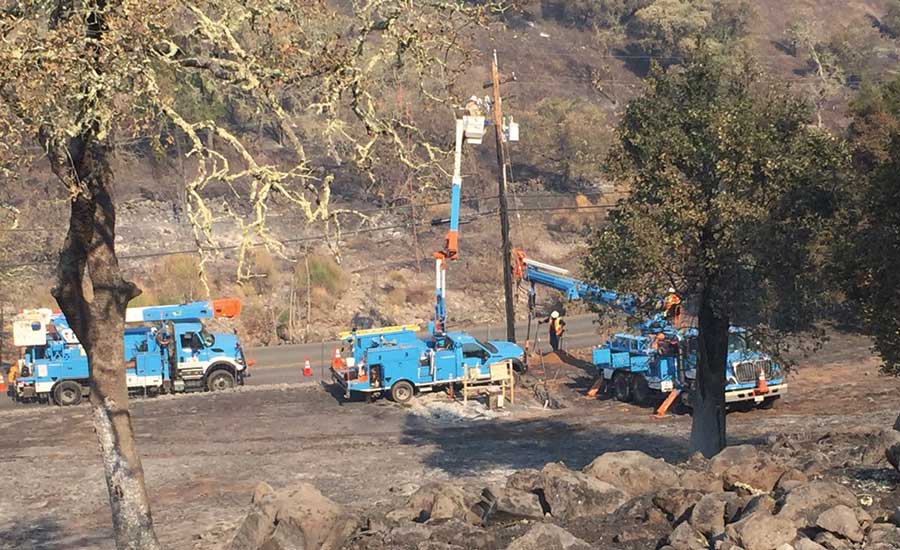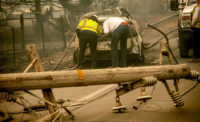Pacific Gas & Electric Co. was increasing vegetation and fire safety standards even before a Cal Fire report released this month concluded that the company’s electric power lines caused the 12 Northern California fires that burned some 245,000 acres in October.
The investigation showed that fires in Napa and Sonoma counties were ignited when trees or branches fell on power lines during high winds, says Daniel Berlant, assistant deputy director at the California Dept. of Forestry and Fire Protection. In one case, a PG&E-owned power pole failed, causing power lines and equipment to fall on the ground.
The investigation’s results were referred to the district attorney due to evidence of alleged violations of state law in eight of the fires, which resulted in 18 deaths. Cal Fire is still investigating a number of other fires that occurred during the same timeframe.
“Based on the information we have so far, we believe our overall programs met our state’s high standards,” PG&E officials said in a statement.
California Public Utilities Commission enhanced its requirements for clearance around overhead power lines in high fire-threat areas. The rules took effect December 2017 in conjunction with updated High Fire Threat District maps. The updated requirement is for 4 ft of minimum clearance in fire-prone areas. In some places, that is an increase from the previous minimum requirement of 1.5 ft, the report says.
Since 2014, PG&E has nearly doubled the money it is spending on vegetation management, says Brandi Merlo, communications officer for the San Francisco-based utility. The budget now exceeds $400 million a year, and PG&E expects to remove 139,000 dead trees in 2018.





Post a comment to this article
Report Abusive Comment